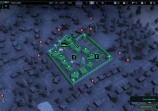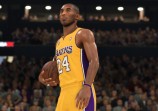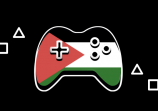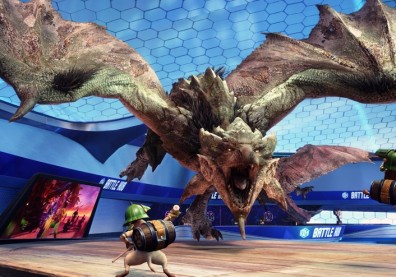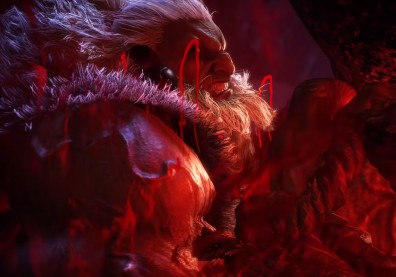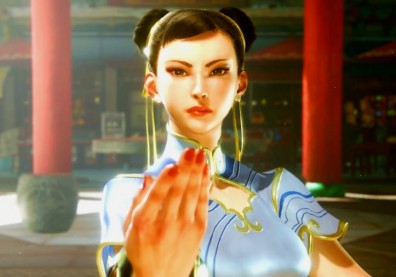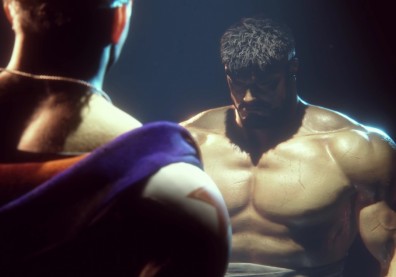Picture this: a crowd of dozens ranging in age from 15 to 45, gathered around a stage displaying the night's big event. Two competitors are squaring off for money, pride, and the respect of the hundreds of viewers in attendance and thousands watching at home. No, this isn't boxing or the UFC. This is your typical Street Fighter tournament.
While fighting games have existed since the simplistic days of Ye-Air Kung-Fu, the competitive community surrounding the genre has its own rich and unique history. Any hardcore competitor will find a way to make a game serious, and the 1-on-1 nature of early fighters such as Street Fighter 2 and Fatal Fury brought out the inner warrior of many gamers.
Seth Killian, current lead designer at Sony Santa Monica and one of the men responsible for Street Fighter 4's success, wrote memoirs of his early days playing the game. Killian's travels bring actual underground fight clubs to mind, as many of his experiences playing the game led to actual in-person confrontations due to his vast mastery of the game over his peers. Killian wasn't the only one who barely avoided real-life fights for playing Street Fighter; New York's Chinatown Fair arcade, while famous for breeding many of today's top players, was often a scene of passionate rowdiness.
While many early competitive arcade scenes were marked by dingy bars and moody atmospheres, the birth of YouTube and various online streaming services helped it grow into a widely-loved form of mainstream entertainment.
The simplistic, spectacular nature of fighting games make them easy to enjoy for both players and viewers, which has helped the annual Evolution event grow from a small local in California to a massive convention of players in Las Vegas' biggest ballrooms. Evo 2012 enjoyed 100,000 concurrent viewers on Twitch.tv on top of the record-breaking number of in-person attendees, but it might not have become the fighting game Super Bowl it is today if this moment wasn't captured and put on the internet:
Known as "Evo Moment 37" or simply the "Daigo Parry," this video showcases one of the most memorable moments in all of competitive gaming from Evo 2004. New York's Justin Wong and Daigo Umehara from Japan were in the midst of their Street Fighter 3: 3rd Strike Finals match, and Justin's massive lead in health made his victory seem inevitable. He launched a super attack to finish Daigo off, but Daigo was able to use the game's "parry" system to deflect each and every hit of the attack, a technique that requires timing your motions with fractions of seconds. Daigo's counter attack and eventual victory sent the crowd roaring in the same way that a big comeback in an NBA or NFL game does, and many people got their first look at what makes competitive fighting games so special.
While the bulk of the mid-2000s suffered a drought of quality fighting games other than the likes of Tekken and Soul Calibur, everything changed in 2009 when Street Fighter 4 exploded onto the scene. The game's balance of nuanced depth, entrancing nostalgia, and flashy accessibility had gamers of all kinds picking up their joysticks again. And while fighting game tournaments never stopped happening when Street Fighter was in the dark, they enjoyed a huge boost when Street Fighter 4 and future games like Marvel vs. Capcom 3 and Mortal Kombat 9 hit the scene.
Today, people from all over the world compete in fighting game tournaments everywhere from small arcades to massive hotel ballrooms. While some show up to prove they've got the best dragon punch in town, even more attend to witness the magical moments that Wong and Umehara first made famous. You never quite know when there is going to be a huge comeback, a combo thought impossible, or an unknown player overwhelming a big-name competitor, and that's what makes the fighter scene so exciting for those participating in it. I've had the pleasure of attending many major tournaments over the past year and a half, and the events allow people of all walks of life to form genuine friendships over their love of kicking some digital rear-end.
Players and fans currently have more access to high-level fighting game action than ever before. In addition to monthly major tournaments, and weekly local events, many top players are frequently broadcasting their own training regimen, whether it means taking on fans on Xbox Live or spending hours in practice mode crafting the perfect combo. Most competitors are quick to share information and help out their fellow gamers both online and at events, which is a big reason why more and more people are entering the virtual fight than ever.
Street Fighter tournaments now enjoy corporate sponsorship from companies such as Mad Catz, Capcom, Atlus, and even Microsoft for next month's CEO event. Fighting games such as Mortal Kombat and Dead or Alive have done time on the Major League Gaming circuit and the IGN Pro League, two organizations usually more associated with popular PC games like League of Legends and Starcraft II. And while the numbers garnered by fighting game broadcasts pale in comparison to the average RTS game, don't expect the scene to slow down any time soon. The fighting game community is built on brotherhood, hype, and spectacle, and every event manages to contain more competitive magic than the last.
